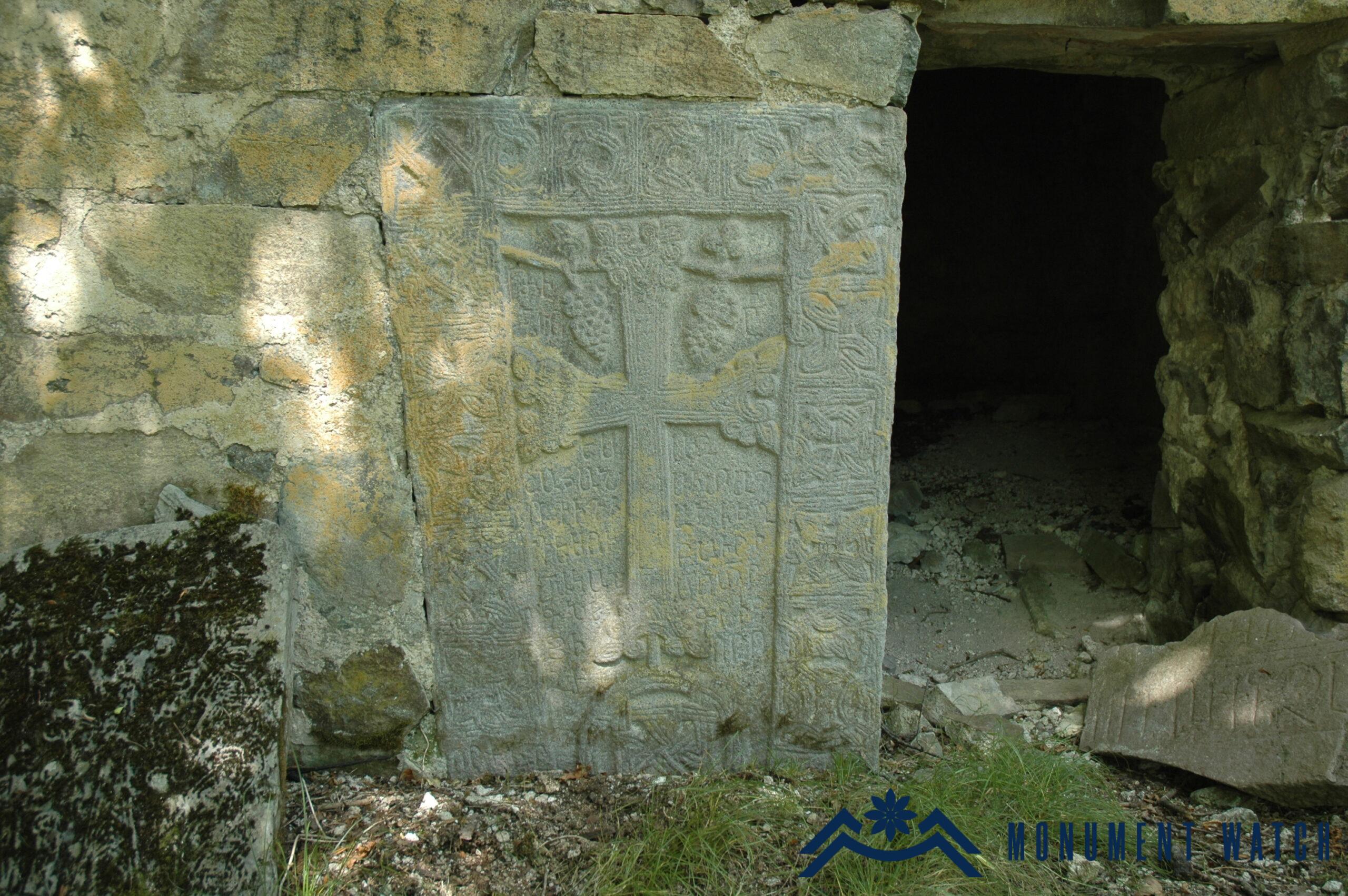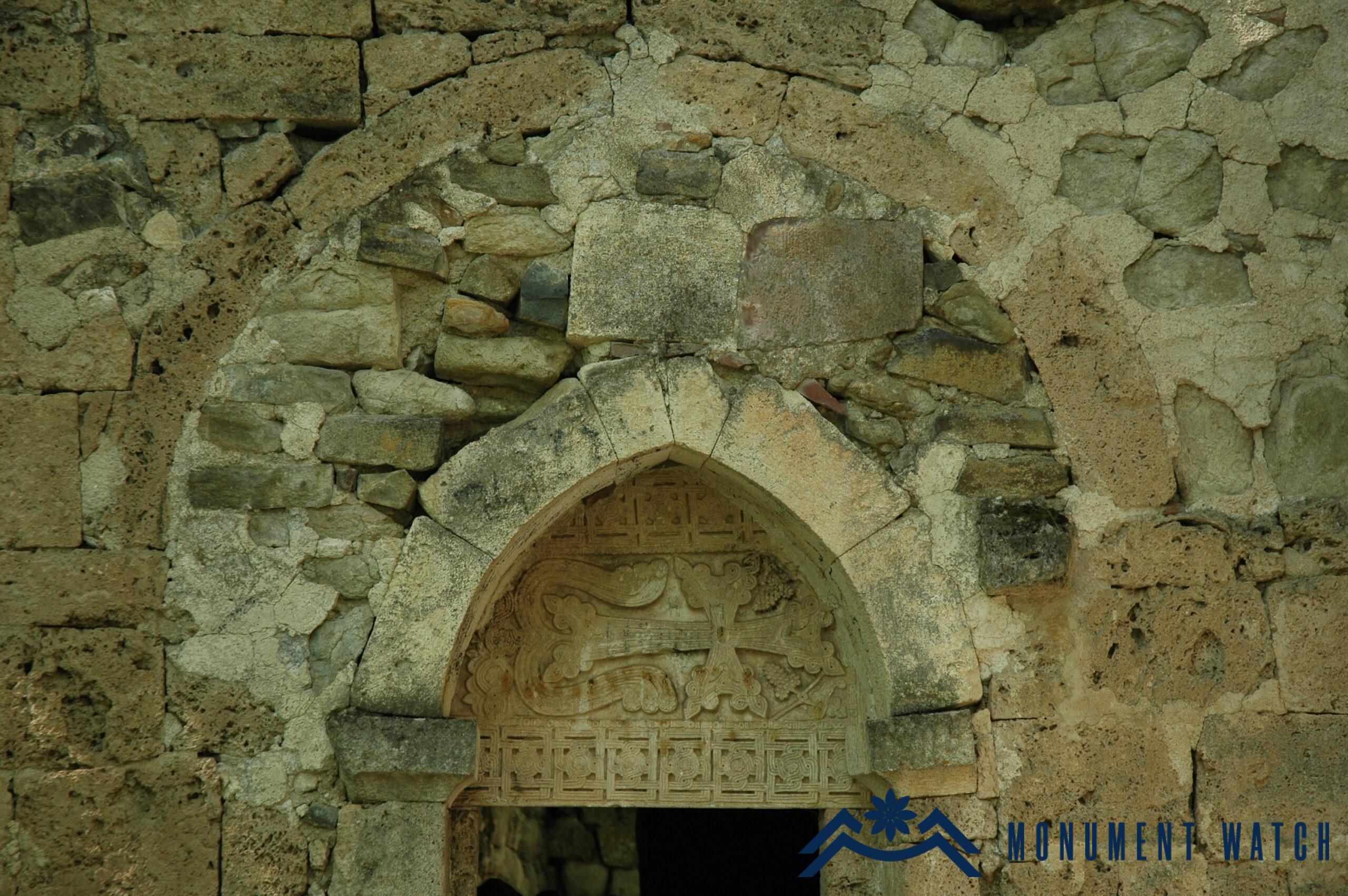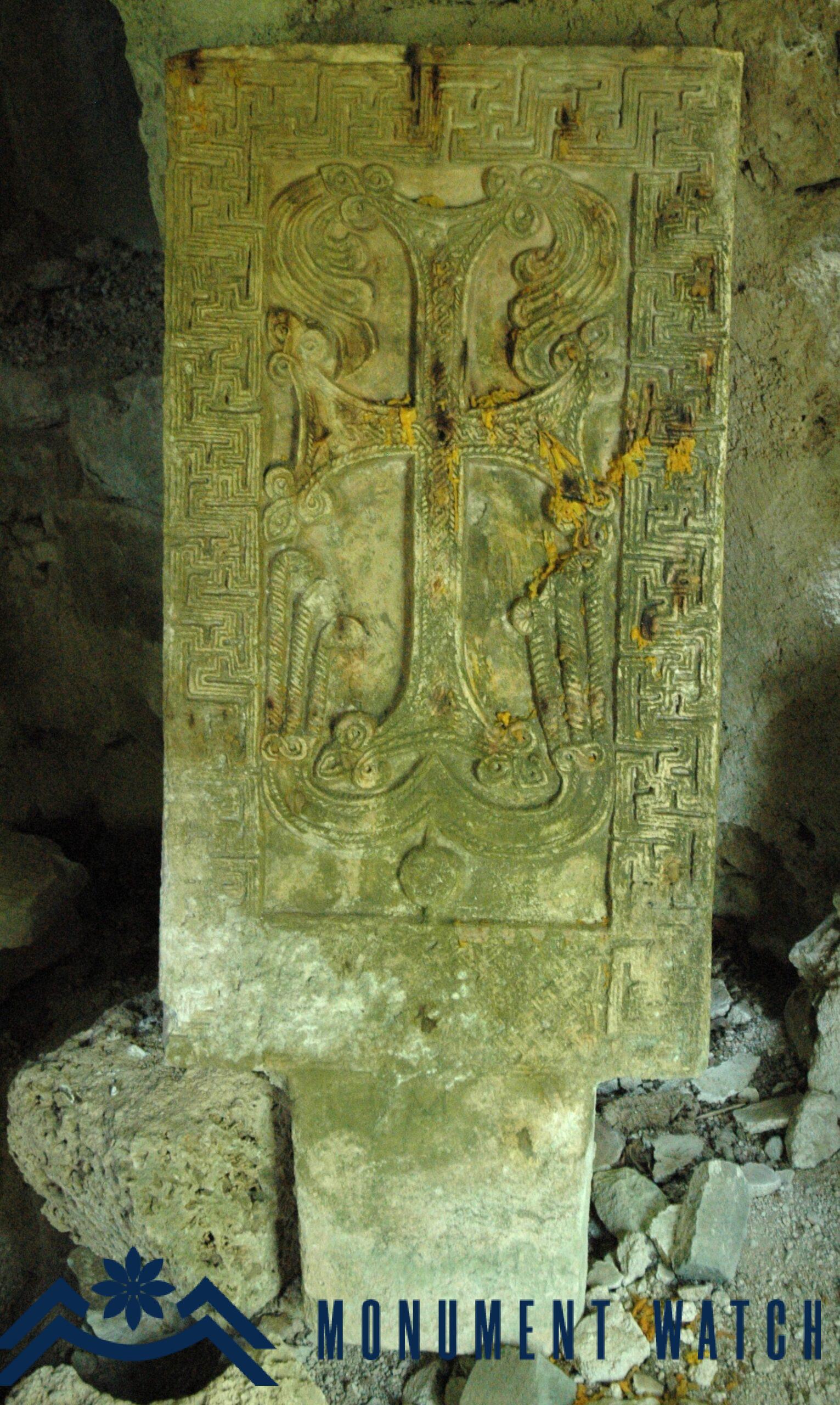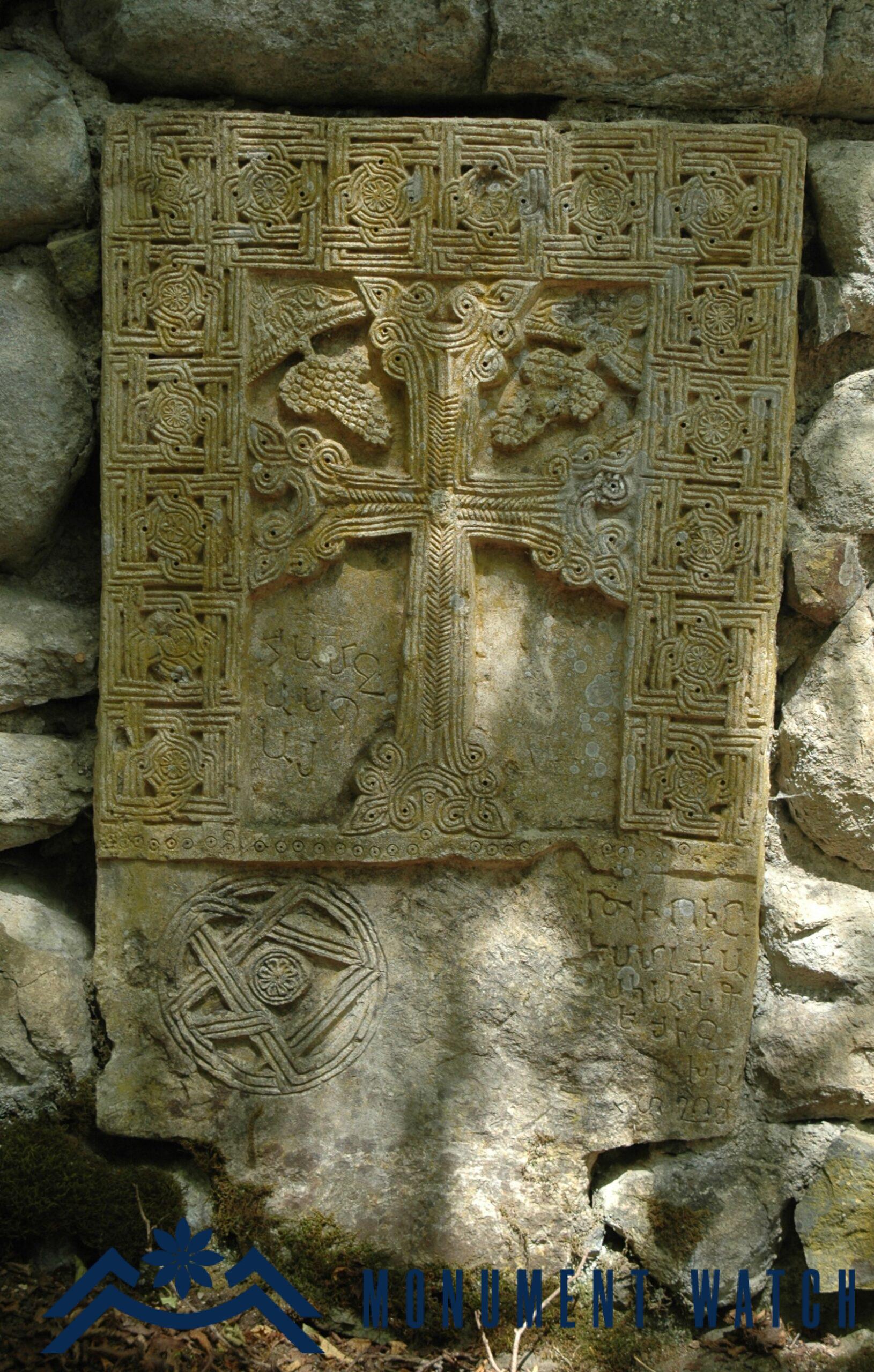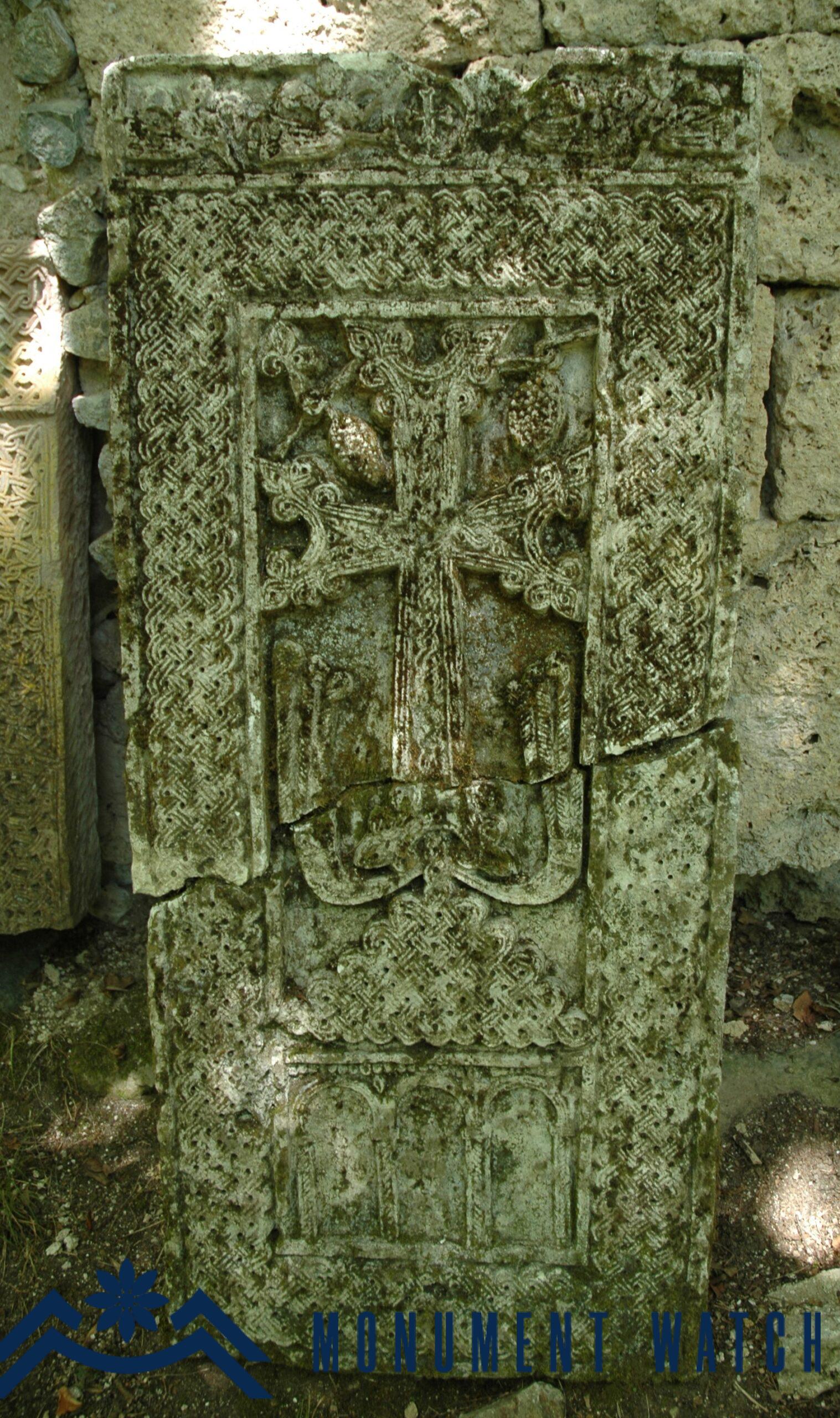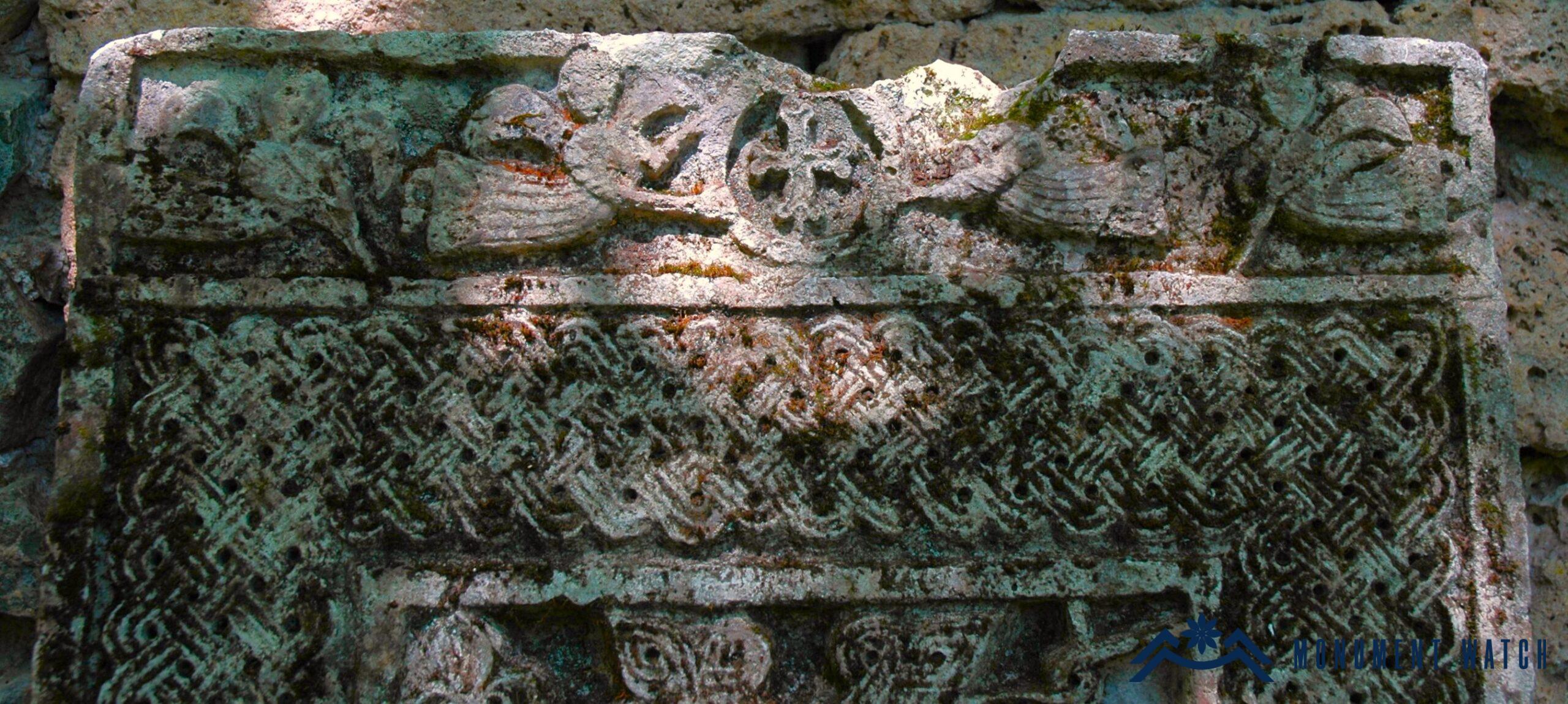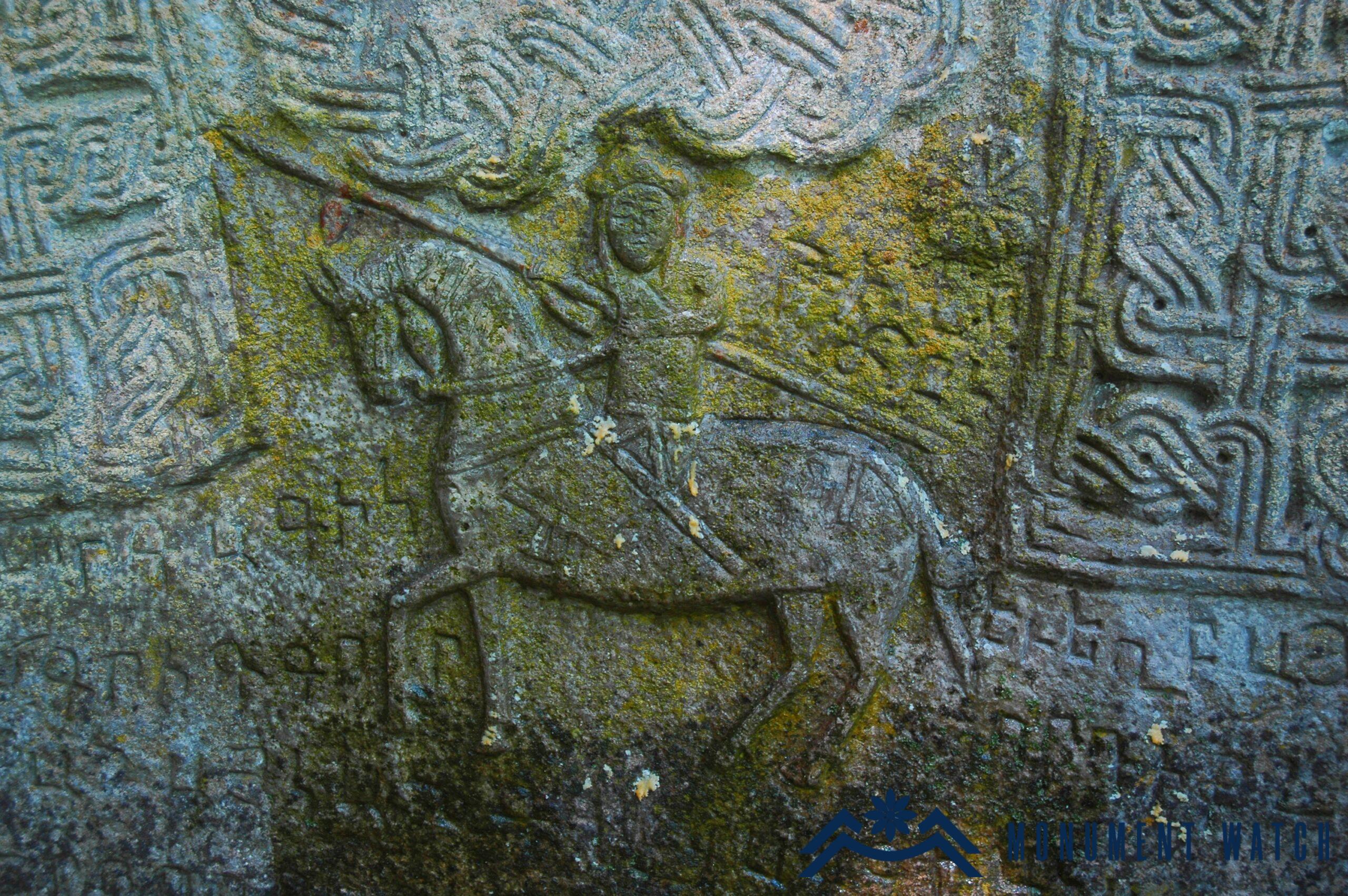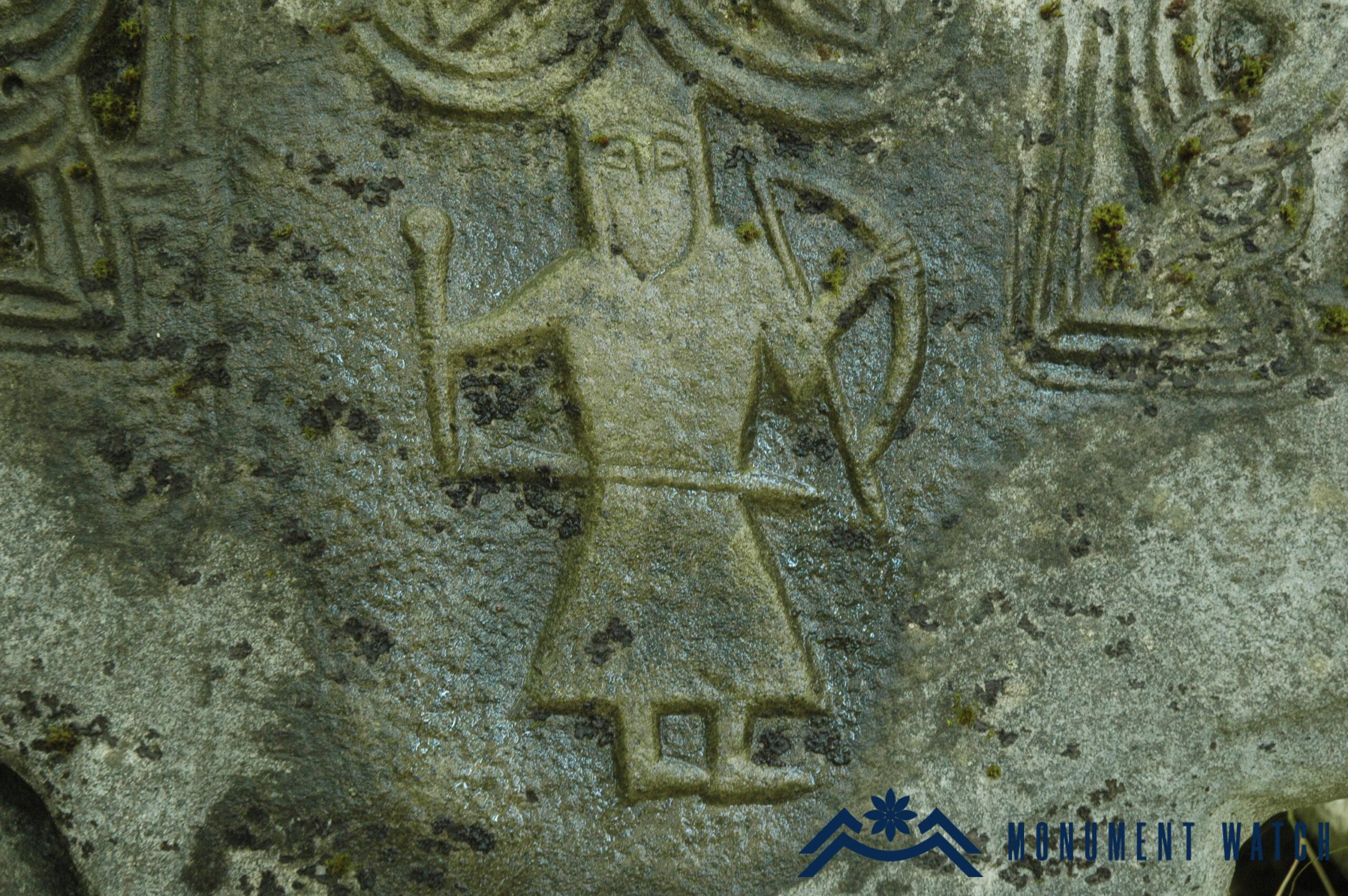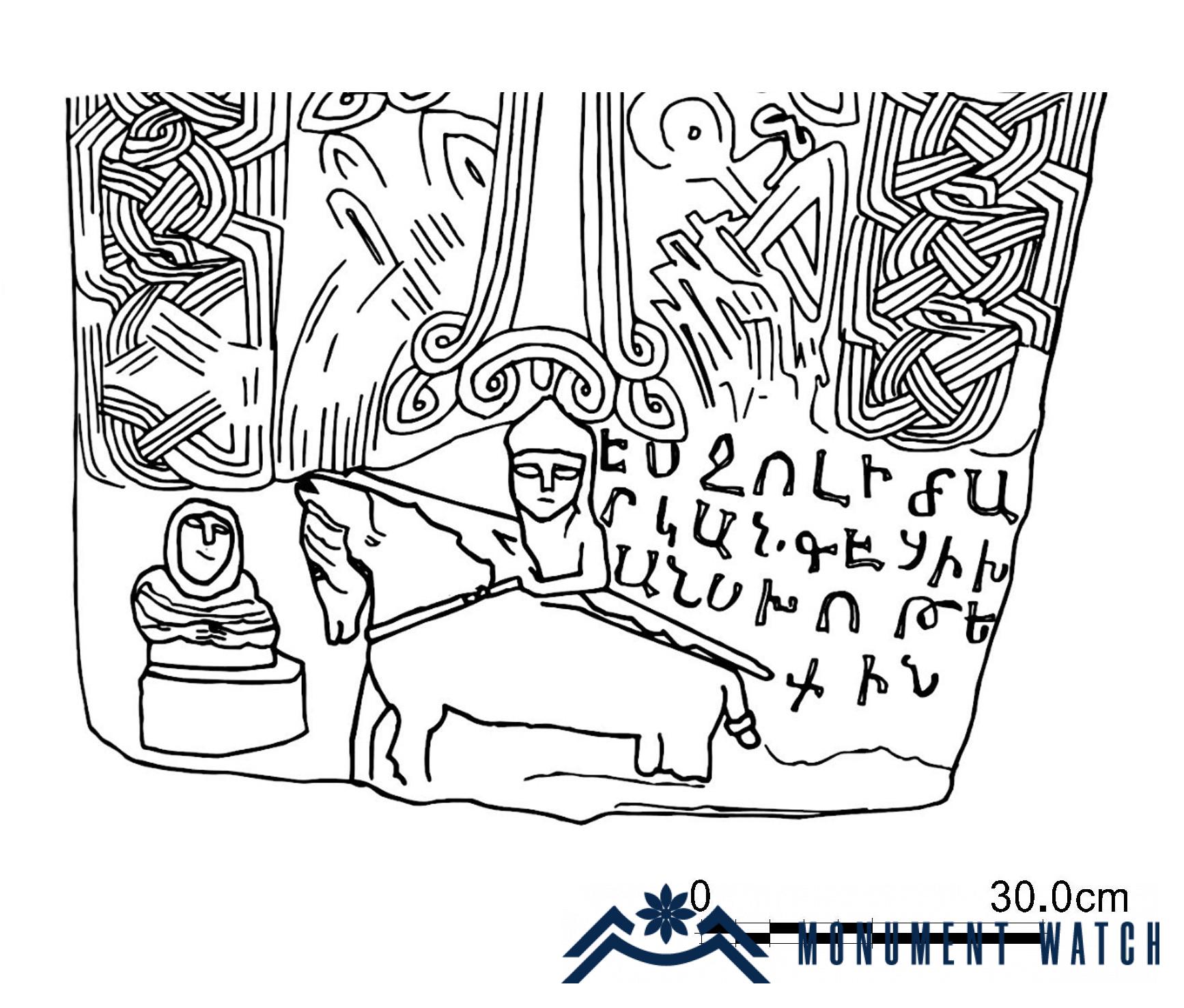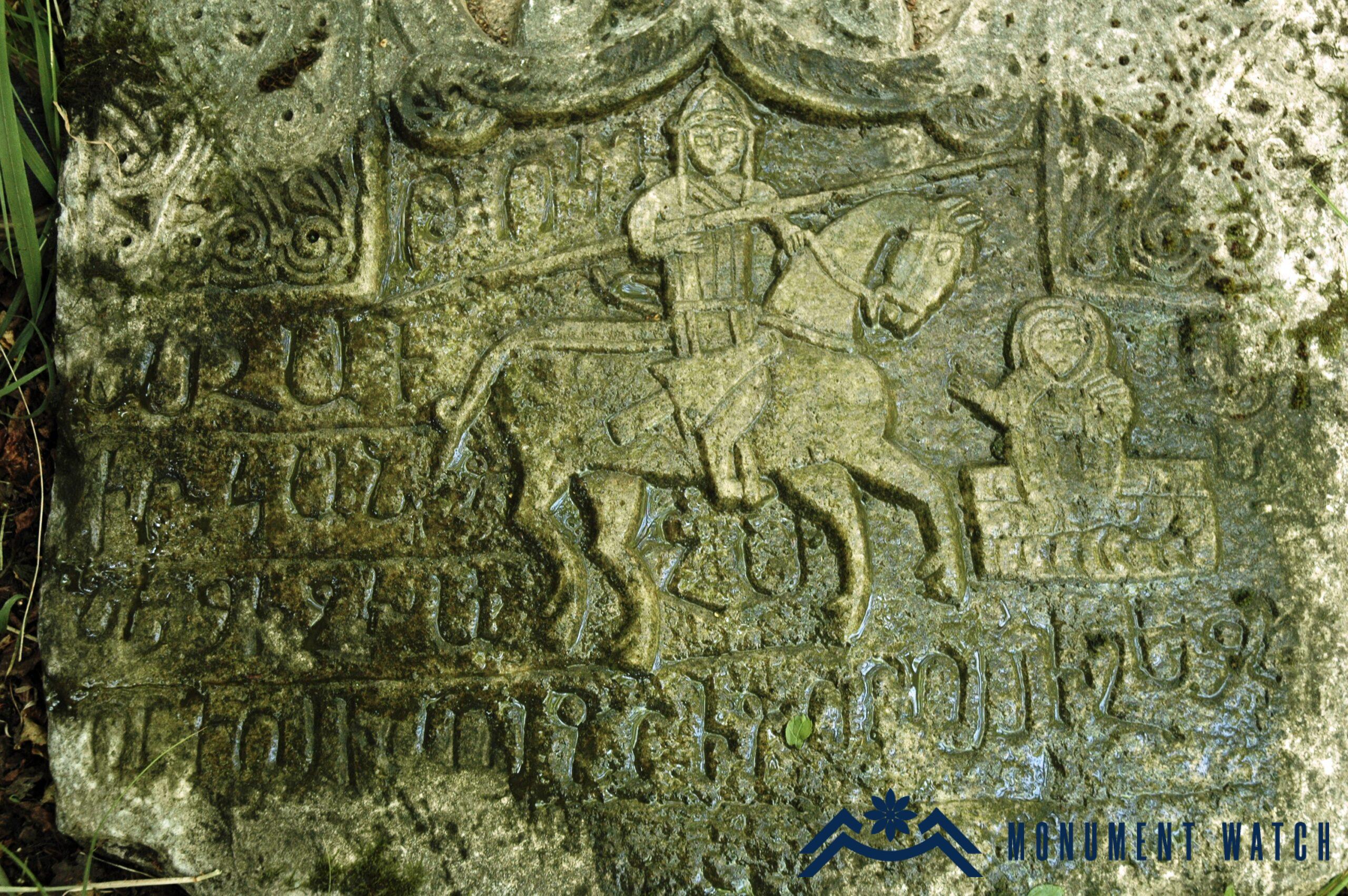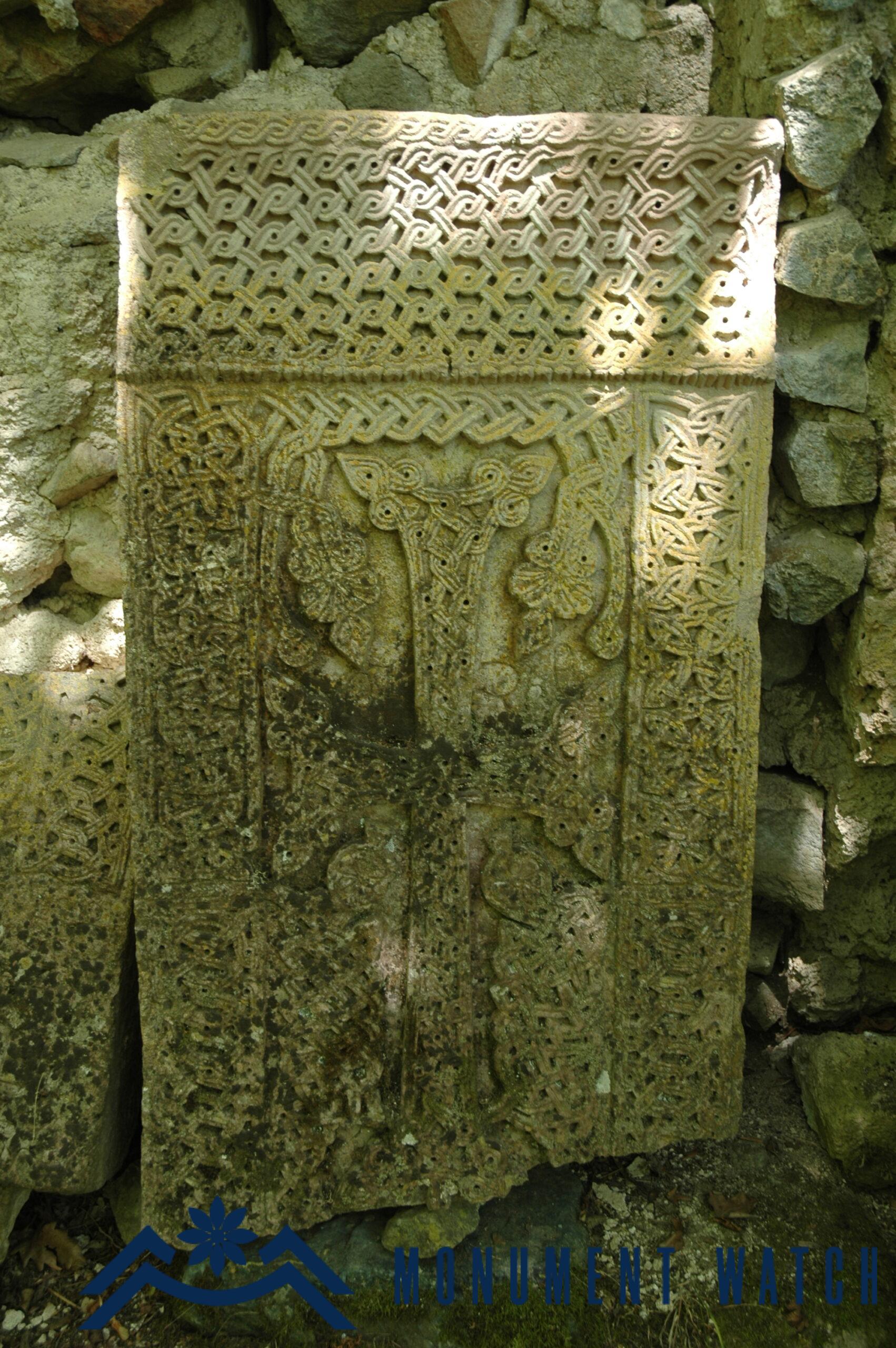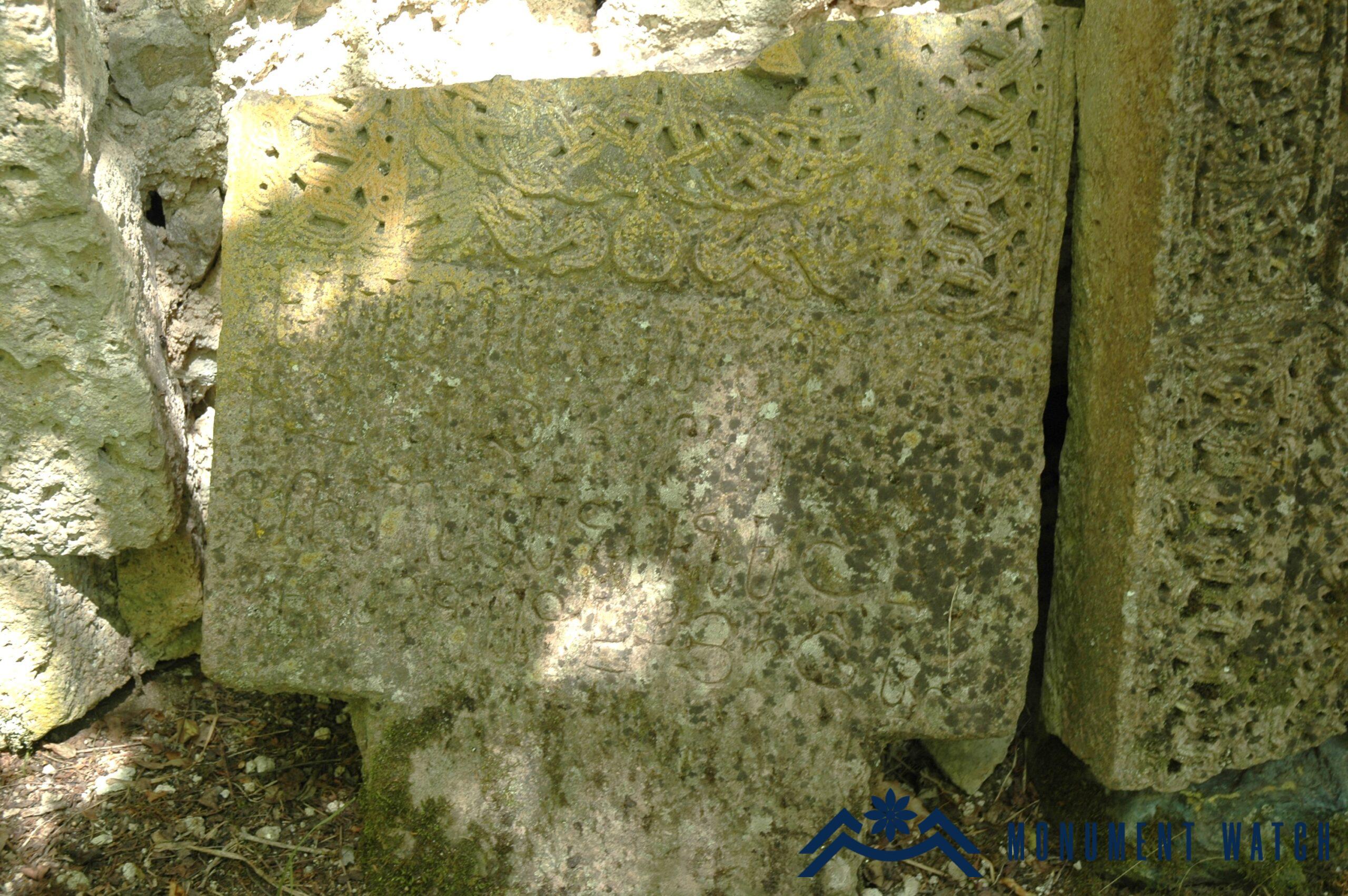Khachkars of Koshik Anapat
When characterizing the khachkars of Artsakh within the broader context of Armenian khachkar culture, two significant characteristics stand out. Firstly, it's important to understand Artsakh khachkars exhibit a strong religious identity that aligns seamlessly with the entirety of Armenian khachkar culture. This is evidenced by their shared functions with khachkars from other regions of Armenia, as well as the consistent structural solutions found in their sculptural compositions. Additionally, Artsakh khachkars feature similar Christian-canonical iconographic themes and figures.
Another point to consider is, that the khachkars of Artsakh serve as a testament to a lesser degree of church-canonical control over the khachkar-making process in this region. This resulted in more extensive expressions of folk ideas. The local flora, various sculptural themes, and figures representing mortals give a special charm to the khachkar culture of Artsakh, making it a rich and unique gallery reflecting costumes, martial arts, family relations, various rituals, and beliefs (Petrosyan, Yeranyan 2022, 21).
From this perspective, Koshik Anapat, boasting over seventy khachkars, stands out as one of the most emblematic monuments of Artsakh.
Near the monastery, remnants of a substantial cemetery endure, yet only the most exceptional khachkars remain at the original site. In Armenian Church construction, old khachkars were frequently repurposed in the building or renovation of new structures. Sometimes, they were utilized as a decorative element, while in other instances, they served as convenient building materials. The majority of khachkars in the Koshik Anapt were reused for these two purposes (Figs. 1, 2).
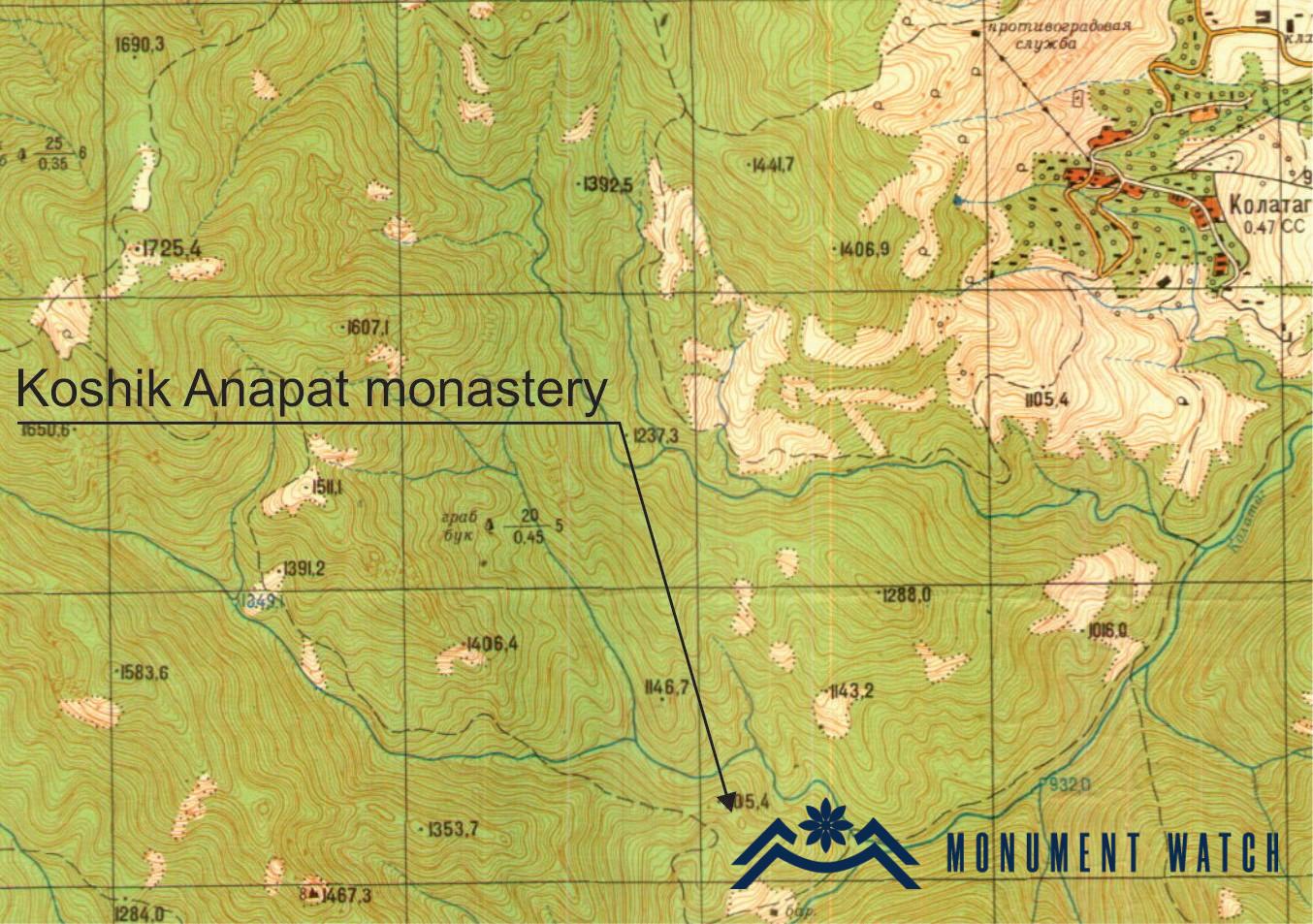
The area of Koshik Anapat is home to many khachkars dating back to the 12th and 13th centuries. Some of the most notable examples of fabrication and sculpture from that period can be found here (Figs. 3 and 4). These khachkars are considered to be perfect works of art, featuring slab decoration, deep carving, intricate border and cornice designs with geometric and vegetal textures, a flowery central cross, a rectangular tabernacle, and bunches of grapes hanging from the upper corners of the tabernacle, which represent authentic local varieties. One particular khachkar merits special attention, featuring a cornice depicting the second coming of the Cross. In this remarkable depiction, angels are shown carrying the cross enclosed within a circle, while both archangels are depicted blowing trumpets (Figs. 5, 6).
The second significant characteristic is the inclusion of sculptures depicting mortals, a feature generally typical of Artsakh khachkars (Petrosyan, Yeranyan 2022, pp. 36-43). These sculptures portray various individuals such as warriors on horseback and foot, armed with spears and bows (Figs. 7, 8), as well as clergymen and secular figures.
All three khachkars of the monastery depict the theme of "inconsolable mourning," featuring a warrior and his mother. In one instance, the mother is shown with folded hands in mourning, while an armed son rides in front of her (Fig. 9).The inscription reads "In 1211 I, Jolinar, raised this cross for Khutep" (CAE 5, 31). On another khachkar (Fig. 10), the lower part of the slab features a depiction of a horseman armed with a spear, a bow, and a quiver, positioned on the left side. In front of the horseman, on the right side of the slab, a mother is depicted sitting on a couch with her arms extended towards her son, accompanied by the corresponding inscription: "Mother." The inscription also reports: "In 1215, I, Chavir, erected this cross for my son Grigor. Remember" (CAE 5, 27). The third khachkar features the same composition as the second one, depicting the armed son and the mother with her arms extended towards him (Fig. 11). The inscription further informs: "In 1194, I, Vasak, son of Ablhej, erected this cross on the coffin of my brother Hasan. Khushush, Hasan's mother. May God have mercy on the doer" (cf. Karakhanyan 1976, p. 102).
Some khachkar inscriptions warrant particular attention. For instance, one inscription reads (Fig. 12, 13): "In 1273, I, Vardan, raised this cross for the salvation of my soul. My nickname is Shek. Whoever worships, remember" (CAE 5, 30). Such a meticulous concern for the accuracy of a name, along with the fear of its confusion with another, reflects a deeper apprehension — a fear of potential confusion regarding the individual and their deeds during the days of Divine Judgment. It is noteworthy that another inscription on a khachkar at the monastery specifically underscores the significance of soul salvation on the Day of Judgment: "I, Gerg, son of Hasan and Mankats, erected this cross for the salvation of my soul, in anticipation of the Great Judgment. Remember me in your prayers. (Year 1273)" (https://www.facebook.com/photo?fbid=362230769380865&set=pcb.362231106047498).
Unfortunately, the monastery has never been subjected to archaeological research during the years of independence, leaving many details of its history, architecture, and Khachkar culture unexplored and unexplained.
Bibliography
- CAE 5 - Corpus of Armenian Epigraphy, issue 5, Artsakh, made by S. Barkhudaryan, Publishing House of the USSR Academy of Sciences, Yerevan, 1982.
- Karakhanyan 1976 - Sculptures of musicians on khachkars of the 12th-13th centuries, Journal of Social Sciences, No. 3, pp. 99-105.
- Petrosyan, Yeranyan 2022 - Monumental culture of Artsakh, Antares, Yerevan.
Khachkars of Koshik Anapat
Artsakh
